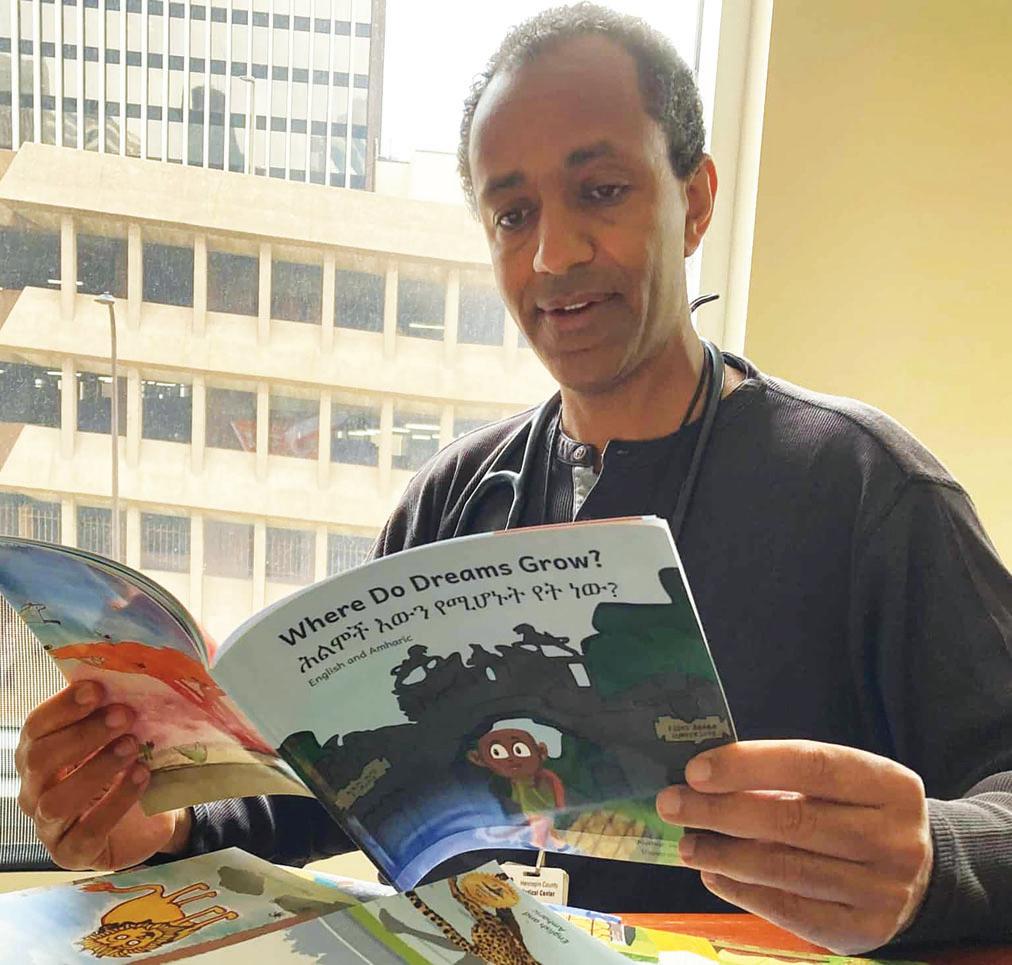




NorthPoint celebrates construction expansion completion, history of excellent service, and future as steward of community health and wellness
NorthPoint Health & Wellness Center’s mission of partnering to create a healthier community has made major advances over the last 7 years with our historic campus expansion.
As a community health center, social services anchor, and legacy institution in North Minneapolis for over 55 years, we are experiencing rapid growth. Now serving over 30,000 residents annually, an increase of our space allows us to meet the community’s needs.
To meet these growing needs, the NorthPoint Community Board has embarked on an extensive community development project surpassing $90 million, including an $87.15 million investment from Hennepin County. This community development plan not only provides new space for patients and clients, but also extends its reach into the community, providing major economic development opportunities, by working across multiple sectors including public, private, health, housing, food and transportation.
NorthPoint’s newly expanded campus has been designed to integrate health and human services to address all aspects of our community’s health and well-being.
The Campus
Current and upcoming features of the newly expanded campus include:
A 135,000-square-foot facility with additions to the north and south of the original 67,000 square-foot building
Continued Medical, Dental, Behavioral Health and Human Services
Expanded Food Shelf distribution operations
New Dental specialty services
Child Wellness Center
Spiritual Wellness Center
Wellness Studio for exercise
Café with grab-and-go food and beverage options
Teaching Kitchen Community Courtyard
Greater environmental and conservation impact with a raingarden and on-site storage for stormwater reuse
Increased access to quality and innovative health and wellness services
More employment and economic development opportunities in North Minneapolis
Timeline
Phase 1 began in 2017 with the construction of the parking ramp and 5th floor at 1256 Penn Ave (which is now home to NorthPoint’s Conference Center and administration offices).
Phase 2 began in 2018 with the relocation of Estes Funeral Chapel and demolition of 1315 Penn Ave.
Phase 3 began in 2021 and has included the expansion of our campus on the 1300 block of Penn Ave N. In addition to expanding our ability to serve North Minneapolis, NorthPoint worked with Hennepin County, AECOM, JE Dunn, KMS and Tri Construction to ensure a continuation of services all throughout construction.
Community Impact
21,084 individuals served in our clinic / 13,708 individuals served by our Human Services (2022).
4,751 households served in our Food Shelf (2022).
Over 90% of guests are people of color.
Over 40% of our guests receive services in a language other than English.
280 full-time clinic staff / 85 full-time Human Services staff
Over 60% of staff and 80% of board members are people of color.
$85.1 million total economic impact, resulting in 24% lower costs for patients and $31 million in savings to Medicaid (2018).
We provide culturally responsive trauma informed models of care that improve health and social outcomes.
The Story
NorthPoint Health & Wellness Center is a multi-specialty medical, dental and mental health center and human service agency located in North Minneapolis. Our facility is handicapped accessible with ample parking, free transportation services for area patients and conveniently located on several bus routes. NorthPoint strives to improve the physical and socio-economic health of the North Minneapolis community through an integrated model of health and human services.
NorthPoint is a Federally Qualified Health Center (FQHC) – often referred to as a Community Health Center (CHC). CHCs are nonprofit, community-directed health care providers serving low income and medically underserved communities. CHC grant funding allows NorthPoint to provide quality, affordable, primary and preventive care to individuals and families in all financial situations.
NorthPoint is administered through a partnership between Hennepin County and a Community Board of Directors comprising NorthPoint’s patients and people who live and/or work in the community. The majority of the board members must be patients or clients of NorthPoint. The Community Board governs oversees, sets strategic direction and establishes policies and procedures to ensure the effective operation of the organization. While NorthPoint serves patients and participants throughout the metro area, the majority come from North Minneapolis and northern suburbs.
Services Behavioral Health Dental
Eye Care Food Shelf Human Services Laboratory Medical MNsure Navigation Pharmacy Radiology SNAP Enrollment Food Shelf
Leadership
The time has come for NorthPoint Health & Wellness Center to announce the retirement of our Chief Executive Officer, Stella Whitney-West, in June 2024.
Stella has served NorthPoint as CEO since 2007. She joined NorthPoint in 2004 as the Chief Operating Officer of NorthPoint Human Services.
For Stella, the most important part of our work at NorthPoint are the lives we have touched. “We are a community legacy,” she says. “We have generations of families who have been served here, and they’re very proud of that.”
At the ribbon cutting ceremony Stella Whitney-West announced the Board’s selection of Kimberly Spates as the next CEO of the NorthPoint Health and Wellness.










 By Steve Karnowski Associated Press
By Steve Karnowski Associated Press
A former employee sued the city of Minneapolis on Tuesday, alleging ex-police Officer Derek Chauvin hauled her from her minivan and pinned her to the ground with his knee in January 2020, just as he did four months later when he killed George Floyd.
Patty Day, then employed by the Public Works Department, wants over $9 million in damages for her injuries, which included a broken tooth, a deep cut that left a scar on her hand, persistent arm and shoulder pain, and psychological issues including anxiety, depression and flashbacks.
“Chauvin is the most infamous police officer in Minnesota (if not United States) history,” according to the complaint filed in federal court.
“This exacerbates
By Pulane Choane Contributing WriterThe ongoing conflict in Gaza has sparked global debate and, crucially, appears to be shifting perceptions regarding Israel’s actions. Antonio Rosell, a peace activist based in the Twin Cities, emphasizes the changing tide of opinion as he discusses the conflict’s impact.
“This open conflict in Gaza has been taking place now for about seven months,” he notes. “There’s been constant military activity against the territory of Gaza, which affects the millions of people who live there.” Gaza, roughly the size of St. Paul, Minnesota, has been under blockade for nearly two decades. “After the Hamas actions of October 7th, there’s been a huge attack that has directly killed about 40,000 civilians. The majority of them women and children,” Rosell explains. The devastating consequences of this ongoing violence highlight a critical aspect of the conversation: the role of the United States.
“Our nation funds that,” Rosell asserts. “We’ve been funding

Patty’s emotional suffering and increases the frequency of her flashbacks, as Chauvin’s name is repeatedly in the news.”
Day’s attorneys acknowledge she was drunk on the evening of Jan. 17, 2020, and depressed over her impending divorce and other difficulties, according to the complaint. Her minivan had been stuck in the snow for several hours when Chauvin and Officer Ellen Jensen arrived on the scene.
“Chauvin and Jensen violently yanked Patty from her vehicle and, without justification, threw her to the ground in the middle of a street, fracturing her tooth, injuring her arm and shoulder, and causing other significant injuries before handcuffing her,” the complaint says.
“Chauvin then assumed his signature pose, pressing his knee into the subdued and handcuffed Patty’s back — just as he would later do to snuff the life out of George Floyd — and remaining that way well after
Patty was controlled.”
Saturday will mark the fourth anniversary of Floyd’s murder. Chauvin, who is white, kneeled on Floyd’s neck for 9 1/2 minutes outside a convenience store where the Black man had tried to pass a counterfeit $20 bill. Bystander video captured Floyd’s fading cries of “I can’t breathe.”
Floyd’s death touched off protests worldwide, some violent, and forced a national reckoning with police brutality and racism. Chauvin was convicted of murder in 2021.
City spokespeople and an attorney who has represented Chauvin in unsuccessful appeals did not respond to requests for comment on the lawsuit.
Day was charged with drunken driving. A judge ruled that the officers lacked probable cause to arrest her and granted her motion to suppress the evidence. The city attorney’s office then dropped the changes,
partly because of the way the officers treated her, the lawsuit says.
According to the lawsuit, Assistant City Attorney Annalise Backstrom told the court then: “I just want to make clear that my office and myself don’t condone the way that the interaction went down in this particular case.”
Body camera video of the incident was admitted during Day’s evidentiary hearing, but her defense attorney at the time did not keep copies. Day’s lawyers say they’ve been trying for over a year to get the city to release the videos, and accused the city of “intentionally dragging its feet because it would prefer that video of the encounter remain out of public view.”
The lawsuit says Chauvin and his partner filed misleading reports that omitted the true extent of the force they

that for many years and are funding it now. There’s been just even recently, a $26 billion bill sending additional weapons and additional funding for the Israeli military.”
The global response to George Floyd’s murder and the subsequent social media movement has also influenced
how people view the Gaza conflict. “Social media helped us to see the tragedy of what Black people are subjected to in the United States,” Rosell says. “In the same way today, because of the availability of social media, we are able to see live, 24 hours a day, seven days a week, tremendously horrible
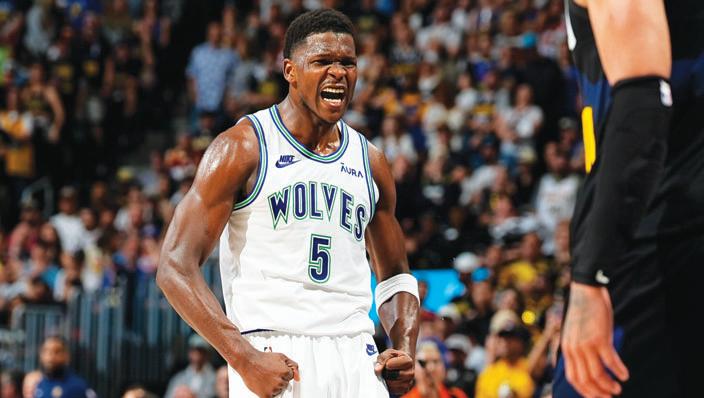
actions against defenseless women, defenseless children, defenseless older people.” Yoji Senna, joining from Bahia, Brazil, shares his personal reflections on systemic racism and violence.
“I left Minneapolis after 32
In the fall of 2022, hundreds of rideshare drivers came to City Hall to tell us about their poverty wages and exploitative work conditions, and advocated for Council to pass policies guaranteeing them the wages and protections that they, like all workers, deserve.
Since that day, we have stood alongside drivers as the co-authors of the Minneapolis Fair Drives, Safe Rides ordinances. In March,

thanks to relentless organizing by drivers, Council passed a historic minimum compensation policy with supermajority support. Council’s action forced state leaders, including the Governor, back to the table after last year’s veto, and set the terms for the state to pass a policy giving drivers a 20% raise and some of the
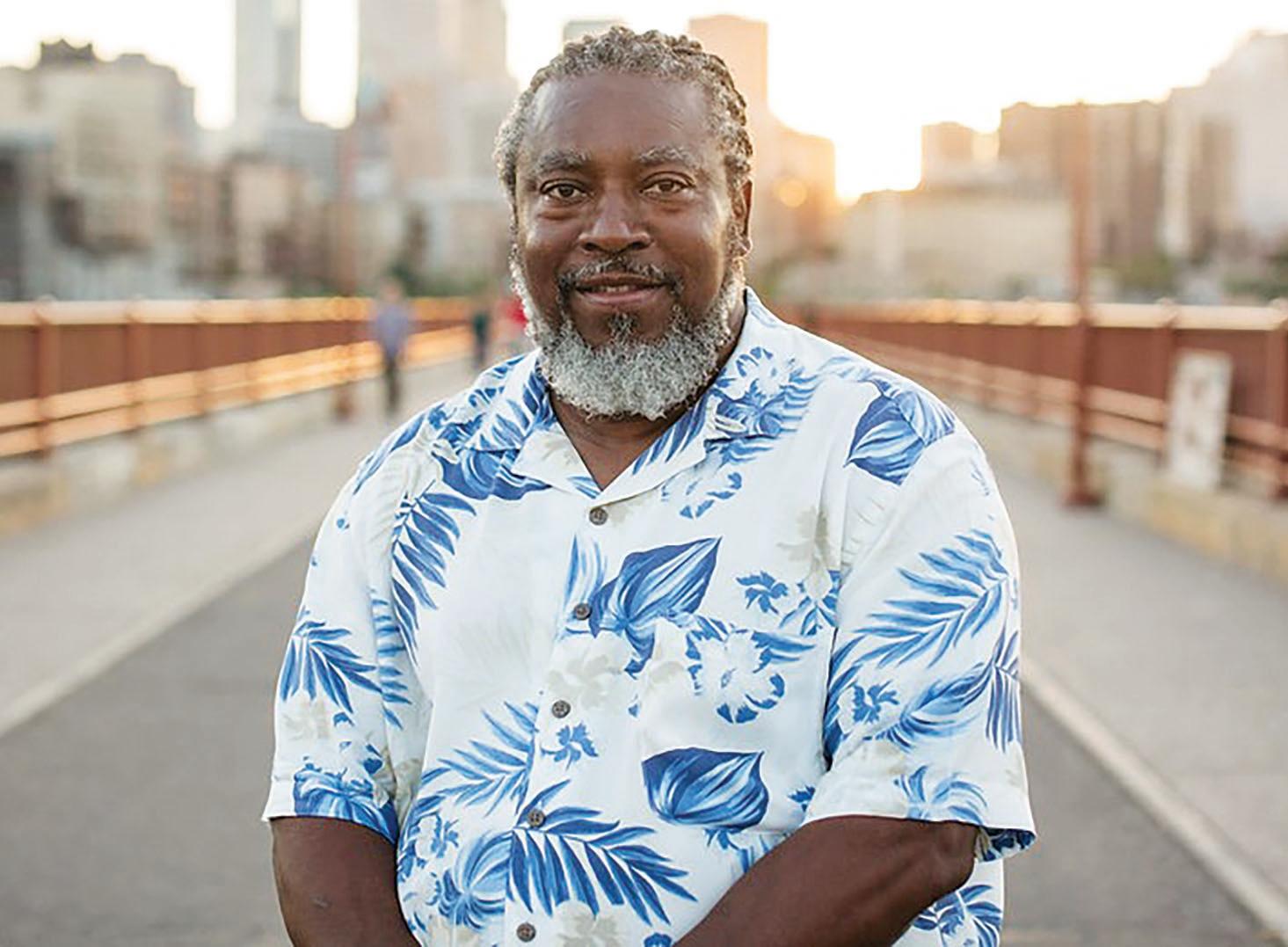 By Pulane Choane Contributing Writer
By Pulane Choane Contributing Writer
In the heart of Minneapolis, amidst its vibrant cultural setting, Charles Caldwell emerges as a beacon of artistic inspiration and community engagement. His story, captured during a recent broadcast of “The Conversation with Al McFarlane” on 90.3 FM KFAI, resonates with a profound commitment to healing and historical awareness through art. Hosted by Al McFarlane, the program delved into Caldwell’s significant contributions to the local art scene and his upcoming community-oriented projects. Originally from Arkansas, Caldwell has adopted Minnesota as his artistic canvas, deeply embedding himself in the community’s cultural fabric. His latest endeavor involves a significant mural on the Kemps Milk building on West Broadway. This mural, as Caldwell describes, is not merely an artistic expression but a communal healing space. “It’s a healing space that, you’re right, I created
In the heart of Minnesota, where the seasons paint the landscape with vibrant hues, the meaning of home runs deep. But for many folks struggling to make ends meet, home isn’t just a haven; it’s a battleground against hidden threats to their health and well-being.
Kathryn Greiner, the driving force behind Rebuilding Together Minnesota, brings warmth and determination to the airwaves of KFAI 90.3FM’s “The Conversation with Al McFarlane.” With a twinkle in her eye and a passion in her voice, she shares stories illuminating their work’s transformative power.
Rebuilding Together Minnesota, as Greiner explains, isn’t just about fixing up

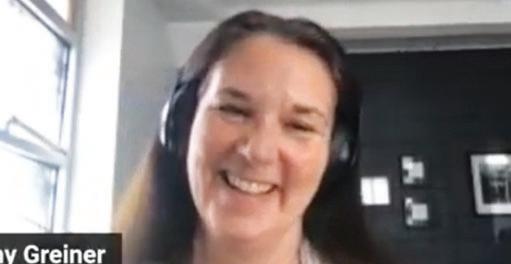
houses; it’s about nurturing lives. “We want to keep people safe in their homes, in homes that don’t make them sick,” she declares with a sense of urgency. Mold, a sneaky foe that lurks in the shadows of
Target on Wednesday posted a decline in quarterly revenue as still higher prices on essentials cut into shopper spending.
The Minneapolis retailer also delivered profit results that were below analyst expectations and issued a muted profit outlook. It posted its fourth straight quarter of declines in comparable sales — those from stores or digital channels operating at least 12 months. But Target said it expects that it will get back to quarterly sales growth this quarter.
Shares slumped nearly 10% in premarket trading on Wednesday.
Target is looking for ways to reverse softening sales.
On Monday, said it would cut prices on thousands of consumer basics over the next several months, from diapers to milk, in a bid to entice customers who are looking for deals.
And it’s also trying to
U.S. Marine Corps veteran and longtime American Legion National Headquarters staff member Rodney K. Rolland was appointed American Legion national adjutant on May 9 during the final day of the 2024 Spring Meetings. Rolland’s appointment was approved unanimously by the Legion’s National Executive Committee (NEC) and came one day after Daniel S. Wheeler announced his retirement following 16 years in the same position. Rolland both worked in and led National Headquarters’ Human Resources Division for more than 17 years before being named assistant national adjutant on May 1, 2022. As national adjutant, he serves as the chief executive officer of the nation’s largest veterans service organization.
make shopping at Target more convenient and enjoyable to better compete with Walmart and Amazon.com.
Target announced a new paid membership program in April called Target Circle 360 which comes with unlimited free same-day delivery for orders over $35 and free twoday shipping for all orders. The annual $99 per year membership is getting a strong reception, the company says. It’s updating existing locations, building more than 300 new stores over the next decade, and also broadening store-owned brand offerings for more cost conscious customer choices.
Target is among a batch of retailers that have reported quarterly results so far, but it did not fare as well as Amazon and Walmart. Amazon, the nation’s biggest online retailer, announced better-thanexpected results for the holiday shopping period last month.
Walmart posted strong sales results, as its low prices have
“I am honored, humbled and inspired to assume this important responsibility for the nation’s largest and most influential organization of U.S. military veterans,” Rolland said. “As a new generation joins and becomes more involved in The American Legion’s programs, services and advocacy, I look forward to expanding our reach and evolving in the years ahead, guided by time-honored values.”
attracted shoppers scouring for deals.
Walmart is also drawing households with income exceeding $100,000 a year as it focuses on convenient and faster ways to shop. Twothirds of Walmart’s market share gains come from that group, Walmart said.
The nation’s top home improvement retailers — Home Depot and Lowe’s — which had reaped the benefits of pandemic splurges on home projects, posted another quarter of sales declines with so many homeowners and prospective home buyers constrained by high mortgage rates and inflation.
Target CEO Brian Cornell told reporters Tuesday that shopping patterns are normalizing, with customers gravitating toward services and out of home entertainment, which cuts into spending on discretionary items. He said one of the biggest challenges they face is inflation on groceries and household essentials, which
he said in many cases is still up 20% to 30% compared with prices before the pandemic. That, he said, is putting a “strain on consumer wallets.”
But Cornell also noted a healthy job market and the confidence that consumers can find another job has helped to boost spending.
“We haven’t seen a significant change (in consumer behavior) for the last few quarters, and we still see a very resilient consumer and expect that to continue over the balance of the year,” Cornell said.
Target reported net income of $942 million, or $2.03 per share, which is 3 cents short of analysts projections, according to a survey by FactSet. Profit for the period ended May 4 was also below last year’s $950 million, or $2.05 per share.
Its revenue slipped 3.1% to $24.53 billion, slightly better than the $24.52 billion Wall Street expected.

Comparable sales slipped 3.7% in the latest quarter, a smaller decline from the 4.4% drop during the fourth quarter. Sales declines were primarily in discretionary categories, and were partially offset by continued growth in beauty, the company said. But Target said clothing sales, while still down, improved.

A member of American Legion Post 333 in Columbus, Ga., Rolland’s previous responsibilities as assistant national adjutant included leadership in the areas of staffing, policy, strategic planning, national resolution fulfillment, technology, budget, communications, event management and others. He has also worked closely with American Legion national commanders and other constitutional officers of the organization, as well as commission leadership, staff executive directors and division directors. He continued to simultaneously serve as Human Resources director at National Headquarters, a position he held from 2013 to 2024.
“I thank National Commander Daniel Seehafer and the National Executive Committee for trusting in my leadership. And I thank Daniel S. Wheeler for mentoring me over the years,” Rolland said.
“Foremost, The American Legion is much more than
For its second quarter, Target said it expects
National Headquarters. We operate with a shared sense of purpose through ‘individual obligation to community, state and nation,’ as the Preamble to our Constitution states.
“This is one big team, from every Legionnaire in every local post to the top officers and staff fighting every day for veterans and their interests in Washington. It is an honor and a privilege to help lead our talented, dedicated staff in the important work we do every day.”
Rolland earned a master’s of business administration degree in 2007 from Indiana Wesleyan University, where in 2005 he also received a bachelor’s degree in business. His wife, Sandy, served more than 20 years before retiring from the U.S. Army.
comparable sales to be anywhere from unchanged to a 2% gain. It expects to earn between $1.95 to $2.35
according to FactSet.
“As you leave here today, what I want you to take with you is that I am committed to making you feel proud about your decision today,” Rolland told the NEC. “I am committed to putting my best foot forward each and every day.”
Prior to Rolland’s appointment, Seehafer delivered closing remarks to the NEC, urging its members to continue advocacy through the Legion’s Grassroots Action Center and promoting its Be the One suicide prevention program.
“Let America know that we mean business when it comes to changing lives and saving lives, especially with our veterans and their families,” Seehafer said. “This is our mission: Being the one as we continue to change lives and save lives.”




strongest rideshare protections in the country. Had drivers not organized at the local level, and had Minneapolis City Council not passed our strong rideshare policy in March, there would be no statewide policy to celebrate today. While the state policy is a historic victory for drivers, it came with a historic betrayal by
Governor Walz in demanding preemption in order to pass a statewide bill. Preemption strips all cities of their authority to regulate compensation and other requirements for Transportation Network Companies like Uber and Lyft. Preemption is inherently antiworker and undermines local democracy. Preemption will be weaponized to dissuade unions and community organizations from championing crucial worker protections on the local level. Throughout this
policy fight, Uber and Lyft used the same bullying and scare tactics that have allowed them to block worker protections in cities and states around the country. These two billiondollar tech companies have been successful in pressuring many elected officials to allow them to continue their exploitative labor practices, and we are proud to say as co-authors joined by a supermajority of the Council, that we did not succumb to corporate pressure. Some Council Members, legislators, and
executive leaders repeatedly prioritized Uber and Lyft’s profits over minimum wages for a majority Black and immigrant workforce. Drivers won this victory through partnerships with socialist and progressive legislators at the state and city level. While Mayor Frey and Governor Walz offered only vetoes and subminimum wages, legislators on the City Council and state legislature fought tirelessly to amplify drivers’ voices and



From 4
build a more just economy.
We thank these colleagues,
particularly Senator Fateh, for their solidarity with drivers and support for strong policies.
We commend drivers for their leadership over the last two years. Minnesota driver organizing can be a model to workers around the
country. As elected officials, we are honored to have had the opportunity to stand with drivers to make Minnesota the leader in rideshare wages and workers’ protections.
Now, what does this mean for the Minneapolis
years,” Senna reveals. “I lived two blocks away from where George Floyd was assassinated by the police.” His departure was driven by a need for safety and a better environment for his son. Senna’s insights bridge the gap between local and global struggles against oppression.
“Palestinians and Israelis are equally offenders, are equally
racist. But in this case, the disproportionality of the action of Israel is enraging,” he states. He emphasizes the overlooked presence of a significant Black population in Palestine, adding another layer to the narrative of marginalization and violence.
ordinance? This week, Council had intended to pass a revised rideshare policy, based on our original agreement with state leaders, that would reduce our rates to $1.27 per mile and $.51 per minute, and would mandate that TNC’s disclose
data to the city and provide fare transparency for drivers and riders. Since the state has preempted our local legislation, we will be motioning to delete our revised policy from the Council agenda, and thus, will not be taking up a vote on the
policy. All is not lost however, as the majority of protective provisions that were included in our policy have been integrated into the statewide rideshare policy that passed this weekend. The statewide bill will go into effect December 1, 2024. Rideshare
but also Sephardic Jews, creating layers of internal discrimination within Israel. This displacement, combined with ongoing violence, paints a complex picture of the conflict.
Palestinians could constitute a genocide.” In addition to geopolitical analysis, the discussion touches on the evolving public sentiment.
question of violence and how it impacts the trauma. And then what solutions are we able to create,” Rosell muses. In a world increasingly connected by shared struggles and aspirations, the voices of Rosell, Senna, and McFarlane call for a collective commitment to humanity and justice, transcending borders and embracing the universal quest for dignity and peace. This article was based on an interview from The Conversation with Al McFarlane. Gaza From 3
The conversation further explores historical and geopolitical dimensions, adding depth to the shifting perceptions. “Israel is the last bastion of colonialism,” Senna contends. He describes the influx of Ashkenazi Jews displacing not only Arabs
and started last year and I’m super excited about it this year. Because I’m going to be doing a community dedication of this mural on August 10th, nice free day for the community, food, entertainment, and just some healing conversation and just an embrace, a big hug for the
Rosell highlights the role of South Africa in opposing what the International Court of Justice has described as potential genocide. “South Africa is the most courageous and filing that case in the International Court of Justice,” he says. “They have said they have gone as far as to say that Israel’s actions towards the
“The role of students and activists in highlighting these issues cannot be understated,” Rosell argues. “Students led the way during the anti-apartheid protests 30, 40 years ago, and they are leading the way today in the calls for justice in Gaza.”
The shifting perceptions are evident in the international community’s
growing criticism of Israel’s actions. “Our obligation as decent people who believe in God, who love each other, and who want to make a better world is to actually make a difference and change it,” Rosell states. This sentiment reflects a broader call for accountability and a reassessment of longstanding alliances and policies. As the conversation concludes, the focus shifts to the broader implications of violence and the potential for creating lasting solutions. “The
substandard housing, poses a serious threat to the well-being of families. Greiner and her team roll up their sleeves to tackle this menace head-on, armed with hammers and heart.
Through heartwarming narratives, Greiner paints a
community,” Caldwell shared, highlighting his vision for the mural as a nexus of community interaction and celebration. The conversation with McFarlane provided Caldwell an opportunity to reflect on his artistic philosophy, particularly influenced by the legacies of civil rights leaders like Dr. Martin Luther King Jr. Caldwell’s reverence for King is evident in his works, notably in a poetry collage created in 1986, which remains a cornerstone of his artistic expression. “There’s
vivid picture of the impact their work has on real people’s lives. From building wheelchair ramps for kids with disabilities to patching up leaky roofs that keep families awake at night, every project is a testament to their commitment to restoring dignity and hope.
In one touching story, Greiner shares the tale of a young man with cerebral palsy whose world was transformed by a simple ramp. “It’s opened
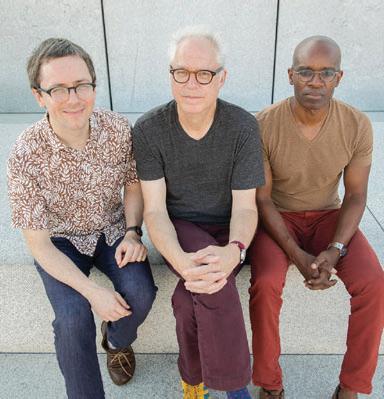


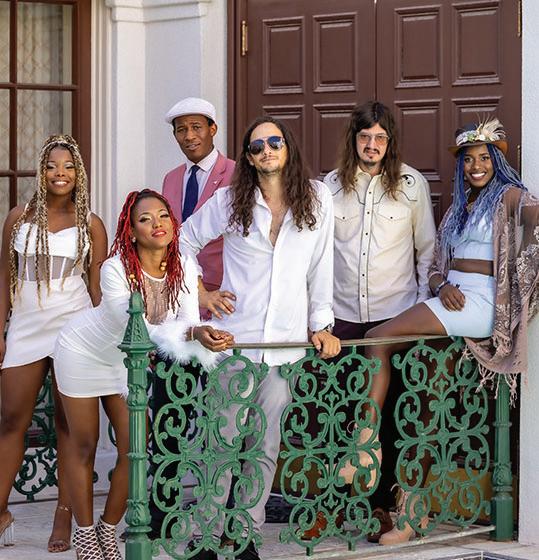


not a stroke that I would change or do differently in it,” Caldwell stated, underscoring the enduring impact of King’s legacy on his work and personal ethos.
Caldwell’s concerns about the evolving challenges artists face today, particularly the impact of technology and social media on traditional art forms, were also a focal point. He expressed unease about the increasing prevalence of AI in art, noting its potential to undermine the authenticity of
up life for him,” she says with a smile in her voice. It’s moments like these that remind Greiner and her team why they do what they do—they’re not just fixing houses; they’re building futures. But ensuring safety isn’t just about the physical repairs—it’s also about the process. Greiner underscores that they supervise volunteers and operate as licensed contractors, adhering to safety codes and regulations. There are
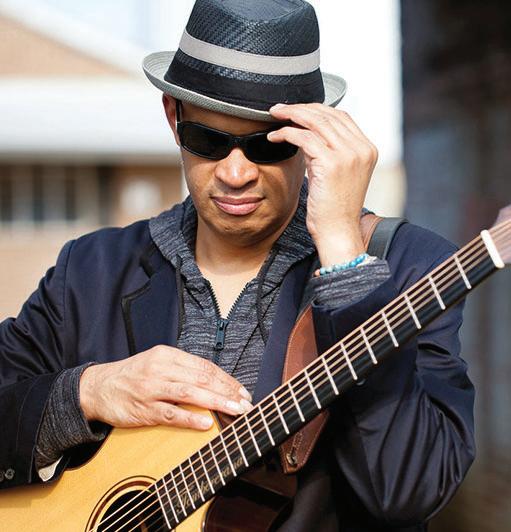





traditional artistic processes. “Even with the art, as an artist, sometimes, some things will pop up on social media, like the big AI revolution, to where it looks like a painting and looks like an artist, like myself, sat down and did it, but it was computerized like a button,” Caldwell lamented, highlighting his commitment to genuine artistic expression. As the “Minnesota Soul” event approaches, Caldwell and other local artists are preparing to showcase their
fees involved, but they ensure that the majority of their work is at no cost to the homeowner. For high-ticket items like roofing, they may set up deferred forgivable mortgages, ensuring that families can stay in their homes without financial strain. As the conversation unfolds, McFarlane and Greiner dive into the nitty-gritty of funding their mission. Greiner doesn’t mince words when she reveals that the organization’s
work and engage with the wider community. This event, set to be a vibrant celebration of African American culture and artistic achievement, provides a platform for artists like Caldwell to display their talents and foster community connections.
Through his murals, paintings, and community projects, Charles Caldwell continues to shape the narrative of community healing, historical awareness, and artistic integrity in Minnesota. His work captures moments of peace and
good efforts are funded by good people and that although resources and volunteers are helpful to the cause, “… money is always good, and we’ll definitely put it to good use.”
It’s a candid plea for support from anyone who believes in the power of safe, nurturing homes. In the quiet lull of the studio, a call to action lingers in the air. For those listening, the message is clear: join the movement
and dreams.
To view the full video of the conversation, visit InsightNewsMN on social media platforms, especially YouTube. Also do not forget to subscribe to the channel, as well as like and comment on the video as well as share it with your relevant community on your social media platforms.





In the vibrant heart of Minneapolis, the impassioned voice of a guest only introduced to the audience as “Brother Omar”, a University of Minnesota student, rings out, championing a cause that intertwines local activism with global ethical concerns. This narrative unfolds on “The Conversation with Al McFarlane,” a program that probes deep into issues of local and global significance. Omar’s activism is fuelled by his concerns about his university’s financial investments, particularly those that may perpetuate global conflicts, like those in Gaza.
Omar’s involvement in student activism is not just a reaction; it is a response to the intricate web of financial investments that universities like his own hold in corporations linked to global conflicts. He brings to light the significant financial stakes involved:
“The University of Minnesota, overall, is one of the top 30 universities across the nation for endowments...We don’t know what they’re invested in, and as a public university, they’re not disclosing that and not being transparent about it,” Omar articulates his concerns about the lack of transparency in how these substantial funds are utilized.
Facilitating this critical discussion, Antonio Rosell—an engineer and peace worker—contextualizes the issue within a broader narrative of national and
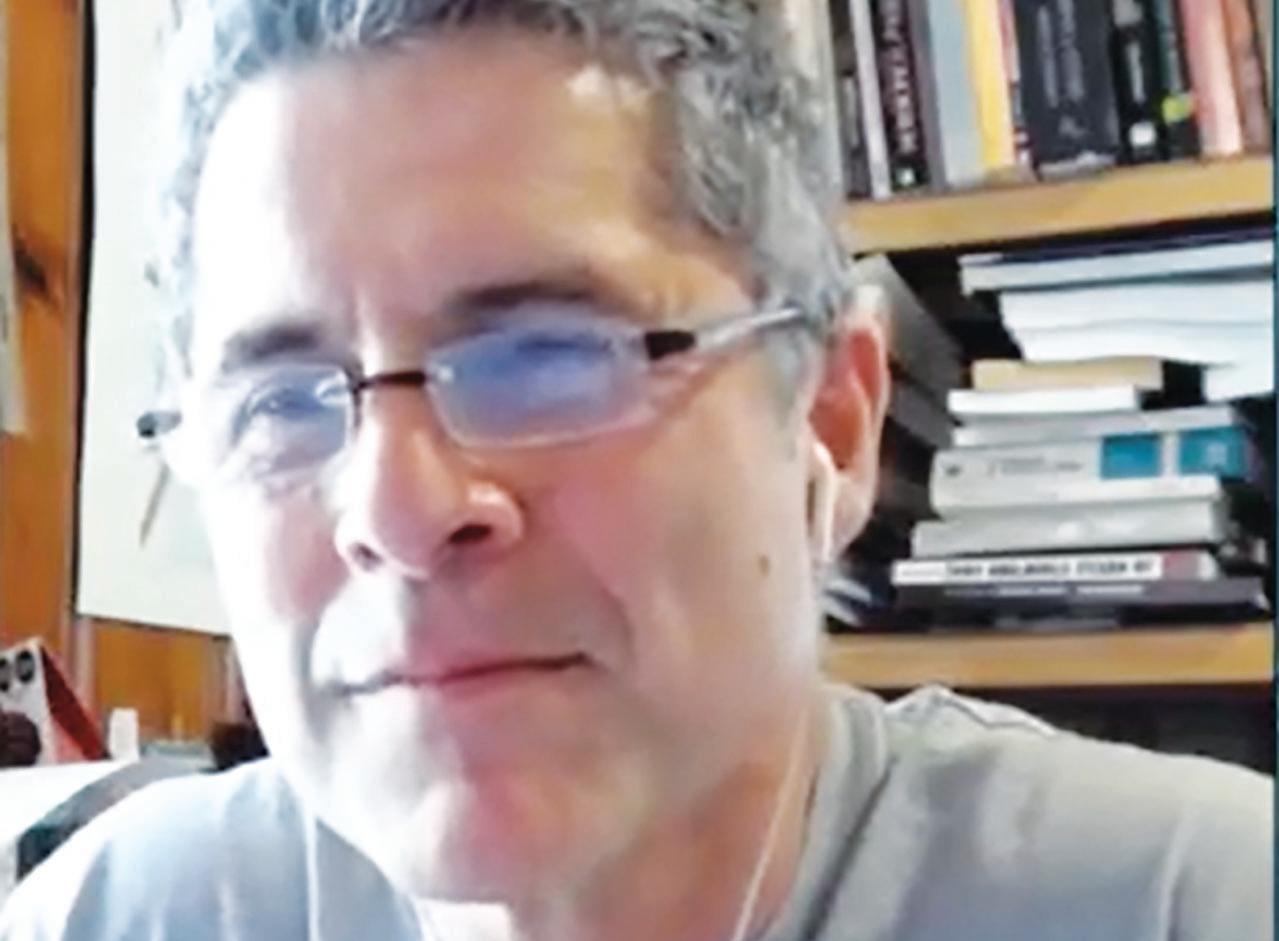
international student protests.
Rosell underscores the urgency and depth of the student movements: “Students have put themselves, their safety, their wellbeing, their academic work, on the line and have said to universities, ‘We are going to be here until you divest the billions and billions of dollars.’” He specifically notes that the University of Minnesota alone has investments amounting to about $7 billion in companies that either produce weapons for Israel or are based in Israel. In Rosell’s remarks
during the conversation, he also acknowledges U.S. Representative Ilhan Omar’s clarity and commitment to certain issues, particularly concerning foreign policy and human rights. Rosell points out that she (Ilhan Omar) is the only member of Minnesota’s congressional delegation who has consistently shown clarity on certain matters, including the conflict in Gaza and the university’s investments. While other representatives have voted in ways that might support ongoing conflicts or
questionable investments, Ilhan Omar stands out for her consistent stance on these issues.
The discussion highlights the tension between student activists and university administrations, especially regarding the initial response to student encampments advocating for divestment. Omar criticizes the university’s approach: “At the University of Minnesota, they said how they sent the cops over because we did not follow university policies when it came to the
encampments. But truth be told, when has following their rules really made a change, shown out through history.”
As the conversation unfolds, Yoji Senna, adding an international perspective from Brazil, discusses the broader implications of such investments, touching upon the moral contradictions of institutions that promote human rights yet support questionable corporate ethics. Senna’s comments highlight the global resonance of local actions, emphasizing the
hypocrisy often present in such institutions: “It’s one more time this hypocrisy of the Western system, that, many times, we even come to question the idea of democracy,” he explains, underscoring the intersection between ethical, educational, and financial decisions on a worldwide scale.
Shaped by his upbringing in Egypt, during the Arab Spring, Omar’s activism today helps him fight for the narrative and the student movement he represents, which he argues calls for a re-evaluation of the ethical responsibilities of academic institutions. This student movement challenges academic institutions to align their substantial financial resources— like the mentioned billions in investments—with the values they profess to uphold. This story is not merely about a local university issue; it represents a broader, global youth movement that is redefining the boundaries of activism and institutional accountability, demanding transparency, and ethical integrity in educational investments.
To view the full video of the conversation between Omar and the host of The Conversation with Al McFarlane, Al McFarlane himself, and his co-hosts in this episode, visit InsightNewsMN on social media platforms, especially YouTube. Also do not forget to subscribe to the channel, as well as like and comment on the video as well as share it with your relevant community on your social media platforms.
Gen-Z will save us all, that’s why they’re being censoredBy Sam Judy Dallas Weekly Magazine
As the TikTok Ban makes its way to the US Senate, progressive organizations on college campuses advocating for Palestine are targets of a new resolution signed into law by Gov. Greg Abbott. Generation-Z, with higher rates of diversity, civic engagement, and education, could be the spark that manifests a radical shift in US politics. And that’s precisely why our current political leaders fear them.
One thing the United States government hates with a fiery, intense passion – more than terrorism, more than world hunger, and more than homelessness – is a constituent educated to the unsavory aspects of western culture and politics.
I don’t think this, I know this. How else could you explain legislation on a social media platform, primarily distinct as it’s become an oasis for progressive awakening and radicalization, advancing faster and with more bipartisan support than policies like marijuana legalization, universal healthcare, or divestment from foreign wars, that are well-received across the political spectrum?
Even as congressional action will progress slowly on this legislative initiative, it’s considered widely to be largely agreeable within the halls of the House and the Senate building. It’s like Nancy says, “Tictac-toe, a winner. A winner.”
But unintelligible ramblings from someone’s grandmother aside, the highranking Democrat and Ronald Reagan fan speaks subjectively on the TikTok ban when stating that this “is not an attempt to ban TikTok, it’s an attempt to make TikTok better.” Because what’s good for the US government is not always good for the people of this country.
So no, I don’t think it’s a coincidence that a platform mainly used by young Americans, who have either just entered the political sphere or are approaching it, is being treated as a potential digital
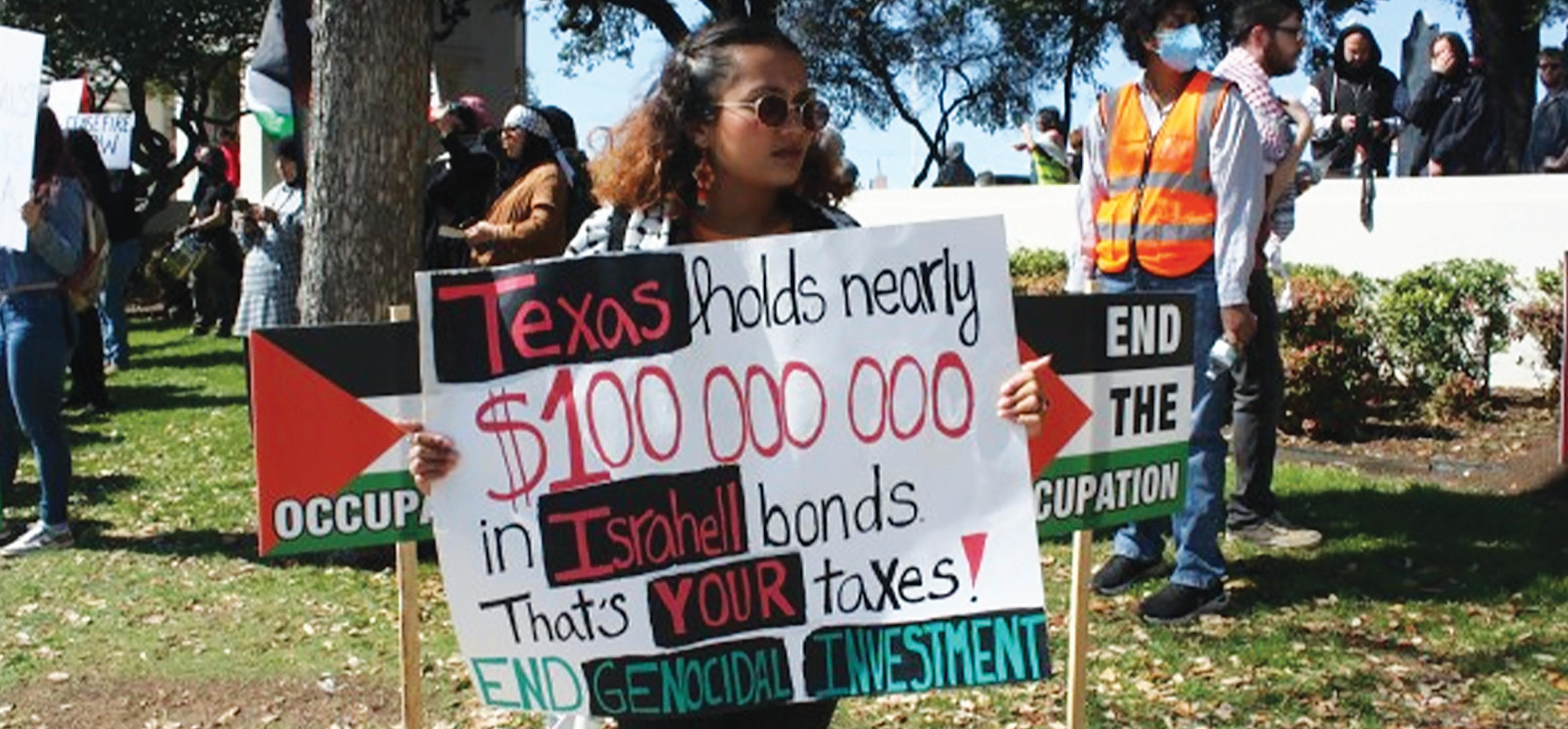
center for propaganda because government entities can less effectively censor its content.
Aside from government rhetoric on TikTok holding racist undertones, a ban of the platform would be a hit directed against Generation-Z. Our current political leaders, many of whom have made careers on blocking critical and consequential legislation to appease lobbyists, hold an enormous fear for younger voters.
Younger voters, Gen-Z in particular, are less likely to go along with the status quo. They are less likely to follow the reasoning that the political establishment lays out for why our policies are so regressive compared to the rest of the world.
Whether this is related to the false depiction of universal healthcare as inefficient and ineffective, Nestle misleading consumers and lawmakers to prevent the establishment of federallyrequired paid maternity leave, or AIPAC’s normalization of Zionism through infiltration of American politics, Gen-Z is not taking the bait. And distinctively, Gen-Z doesn’t seem to be going the way
of the former hippies of the Baby Boom or the previously anti-establishment modern beatniks of Generation-X. In fact, they’re doubling down once they leave college.
In both Texas and the United States overall, as educational spaces are typically seen as a catalyst for political awakening, college campuses are similarly receiving a significant amount of scrutiny. Gov. Greg Abbott recently signed a bill into law cracking down on ‘antisemitism’ on college campuses.
Students for Justice in Palestine at the University of Texas at Dallas have been particularly active in organizing spaces. Working closely with other national organizations like Palestinian Youth Movement and the Party for Socialism and Liberation to organize demonstrations advocating for the people of Palestine and condemning the actions of Israel, students are under threat of censorship from their university and even expulsion, as outlined by Abbott’s measure.
“By misrepresenting pro-Palestinian demands for justices, he tarnishes the reputation of Palestinian and pro-Palestinian activists
while claiming to protect students’ rights,“ SJP of UTD said in a statement last month. “[Abbott] is aware that student-led organizing for Palestinian freedom is a rapidly growing movement across our connected Texas campuses, and he purposefully seeks to silence our voices.” While UT Austin made headlines for sanctioning students for pro-Palestinian activism, schools in California and Tennessee have had students arrested following advocacy for the people of Gaza. This confirms that Texas is not an anomaly with its crackdown on ‘anti-semitism.’ But ‘anti-semitism’ in this sense is simply a dog whistle for anti-Zionism. Ironically, the conflation of Judaism with Zionism shows parallels with the repurposing of the swastika as Nazi imagery from its previous context across Hindu, Buddhist, and Indigenous American faiths as a symbol of peace and prosperity. Zionism, a bipartisan colonial and nationalist movement, is being more widely rejected by Gen-Z than any other age group. For many people, realizing anti-Zionist belief is a gateway to rejecting
the colonial system overall.
The United States, a colonial empire, does not like that. The United States being a colonial empire is not an opinion. When you assess its actions across its 400-year history, you’ll find commonalities in policy from the extermination and displacement of Indigenous and Black populations with current struggles in Puerto Rico, the Sudan, the Philippines, and the Democratic Republic of Congo.
My opinion though, is that a largely peaceful demographic arguing for human rights to be censored by a government that profits from war, genocide, and displacement shows a troublingly-wide moral dichotomy that designates that peaceful demographic as being in a position of enormous power and purpose. The facet of generational change makes this political wave inevitable in its influence.
Gen-Z enters the political stage with more clarity and greater respect for scientific and liberal arts institutions rather than business and commerce and more regard for workers than CEOs, owners, and landlords. This, paired with authoritarian attitudes against
criticism for the government and its allies, sets an inevitable civic confrontation if lawmakers fail to rein in Gen-Z’s political awakening and radicalism. Who knows, maybe Gen-Z will completely transform our political system as they grow and develop as individuals in American society.
The US House of Representatives just passed a resolution condemning the rallying cry “From the river to the sea, Palestine will be free” as an antisemitic phrase with a majority vote of 377-44-1. With this, Congress continues to actively work against young proPalestinian activists by painting their support for liberation as a terroristic threat. As a pattern is beginning to take shape, we’re likely to see more and more legislation that imposes an authoritarian will on the people of the United States. Especially young activists hoping to make significant changes to the political system of this country.
As far as the government sees it, the kids are not alright. But with a big brother like this, what’s the point of good behavior?
In the heart of Minneapolis, amidst its diverse faces and voices, Walter Griffin emerges as a beacon of artistic inspiration and community engagement. Originally from Arkansas, Griffin has adopted Minnesota as his artistic canvas, deeply embedding himself in the community’s cultural fabric. Reflecting on his journey during a recent broadcast of “The Conversation with Al McFarlane” on 90.3 FM KFAI, Griffin shared poignant insights into his seven decades of dedication to photography.
Griffin’s artistic journey began in third grade when he experienced the magic of the darkroom, realizing his ability to create captivating images. “I submerged a piece of white paper into the developer. And it came out with an image. I knew I was a magician,” Griffin reminisced, reflecting on the transformative power of his early experiences with photography. This revelation set him on a lifelong path of capturing the essence of pivotal moments in history, becoming a local legend in the process.
One of Griffin’s most significant photographic endeavors was his documentation of the 25th anniversary of the civil rights march in Selma, Alabama. During this event, he had the privilege of photographing John Lewis, a pivotal leader in the Civil Rights Movement.
“I got to photograph the 25th anniversary of the civil rights march in Selma, Alabama... We hung out, we talked, and

he introduced me to people. I got 60 years of education in eight days,” Griffin recounted, highlighting the transformative power of historical narratives on his artistic perspective. Griffin’s passion for documenting history goes beyond capturing moments of conflict and struggle. He sees photography as a means of preserving the rich tapestry of African American history and culture for future generations. Through his lens, Griffin continues to ensure that the struggles and triumphs of the past are not forgotten, serving as a visual historian of sorts for
his community. As the “Minnesota Soul” event approaches, Griffin remains committed to showcasing his work and engaging with the wider community. His photographs serve as a conduit for cultural preservation and communal unity, capturing the essence of community healing and historical awareness. Through his art, Griffin embodies the spirit of resilience and perseverance, inspiring others to embrace their artistic journeys and contribute to the rich tapestry of Minnesota’s cultural landscape.
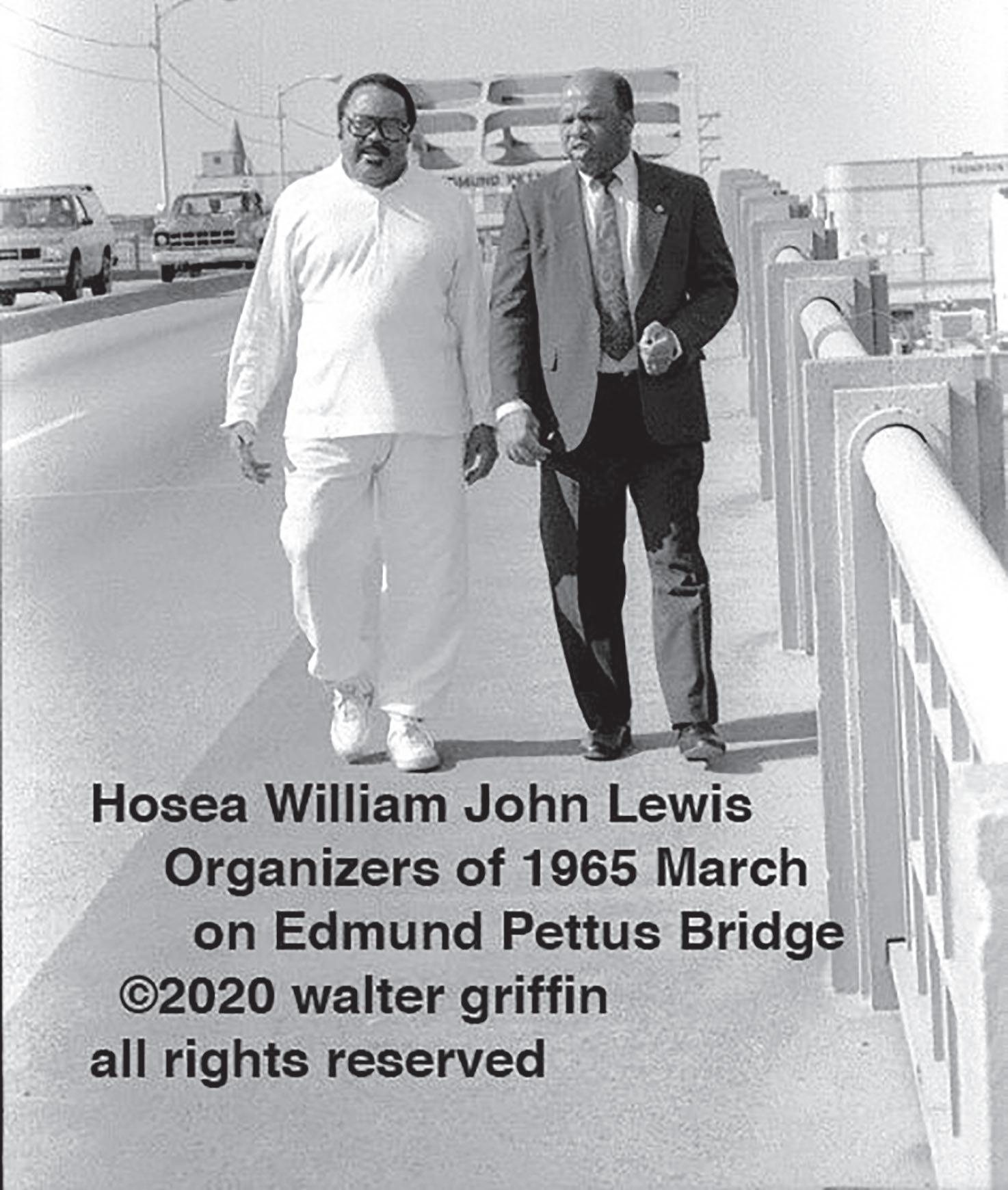
Walter Griffin
”… A lot of people don’t realize that Martin Luther King wasn’t the first person to do the march on Edmund Pettus Bridge. It was Dr. Hosea Williams and John Lewis, who spearheaded the very first one. And so, history needs to be shown and those people need to be recognized. And so, through photographing and documenting them, I bring that to life, through those historical images that I’ve had an opportunity to capture…” – Walter Griffin.
To view the full video of the conversation with the host of The Conversation with Al McFarlane, Al McFarlane himself, and his co-hosts in this
episode, visit InsightNewsMN on social media platforms, especially YouTube. Also do not forget to subscribe to the channel, as well as like and comment on the video as well as share it with your relevant community on your social media platforms.
William Shakespeare’s famous tragedy “Othello” is often the first play that comes to mind when people think of Shakespeare and race. And if not “Othello,” then folks usually name “The Merchant of Venice,” “Antony and Cleopatra,” “The Tempest,” or his first – and bloodiest –tragedy, “Titus Andronicus,” my favorite Shakespeare play. Among Shakespeare scholars, those five works are known as his traditionally understood “race plays” and include characters who are Black like Othello, Jewish like Shylock, Indigenous like Caliban, or Black African like Cleopatra.
But what did Shakespeare have to say about race in plays such as “Hamlet” and “Macbeth,” where Black characters do not have a dominant role, for example?
As Shakespeare scholars who study race know, all of his plays address race in some way. How could they not?
After all, every human being has a racial identity, much like every living human being breathes. Said another way, every character Shakespeare breathed life into has a racial identity, from Hamlet to Hippolyta.
The playwright wrote about many key subjects during the late 15th and early 16th centuries that are relevant today, including gender, addiction, sexuality, mental health, social psychology, sexual violence, antisemitism, sexism and, of course, race.
In my book “Shakespeare’s White Others,” I explore the intraracial divisions that Shakespeare illustrates in all his plays.
Here are four things to know about Shakespeare and race.
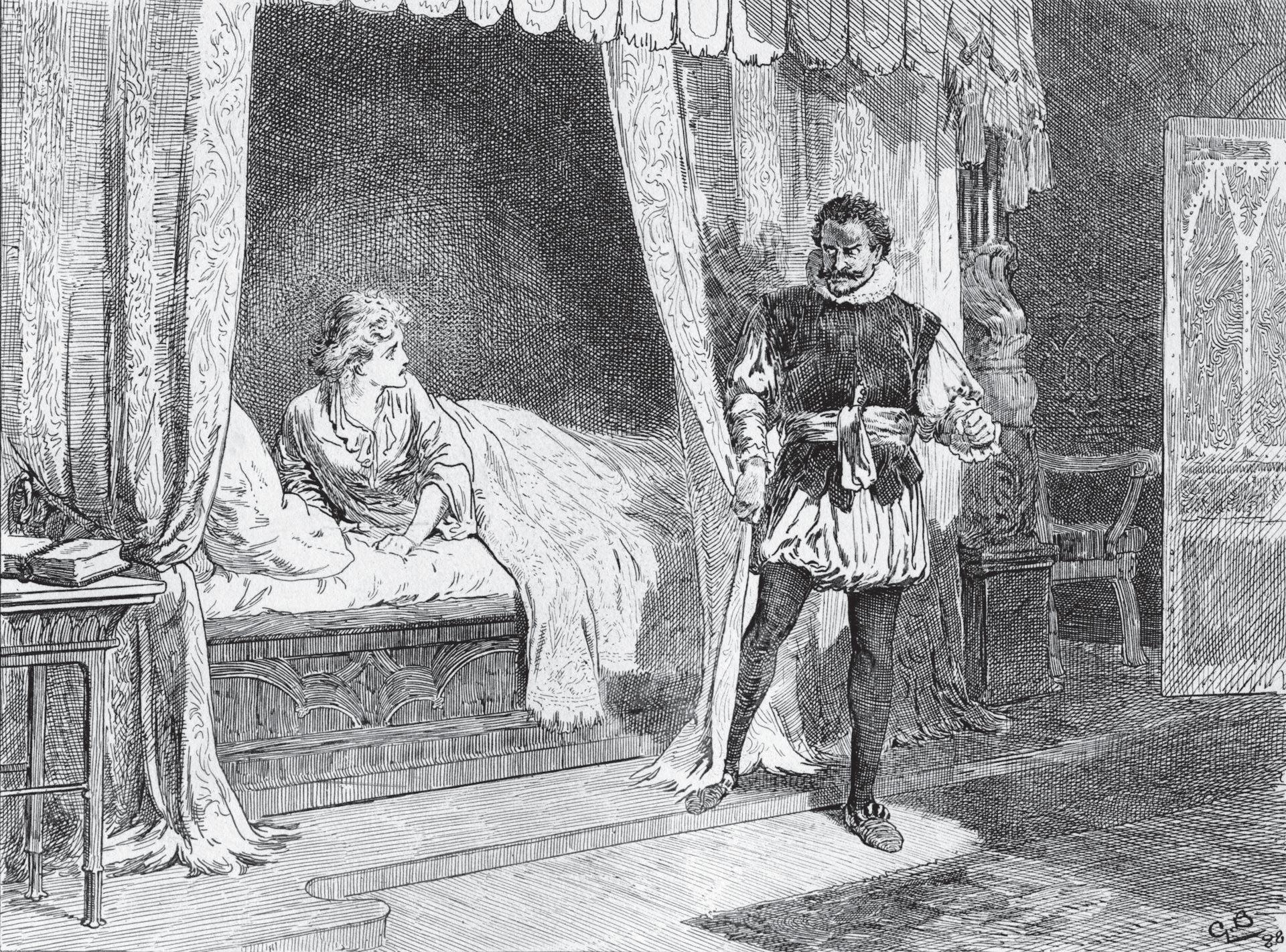
Sex before marriage violated the male-dominated culture’s expectations for unwed white women. Thus, in that play, Hero momentarily represents an “inked” white woman – or a symbolic reflection of the stereotyped, hypersexual Black woman.
In his 1964 essay “Why I Stopped Hating Shakespeare,” James Baldwin detailed his initial resistance. Like many people today, Baldwin wrote that he, too, was “a victim of that loveless education which causes so many schoolboys to detest Shakespeare.”
A major part of Baldwin’s loathing of Shakespeare had nothing to do with the English writer specifically, but rather the white elitism that surrounded his work and literature.
But as Baldwin eventually realized, Shakespeare was not the “author of his oppression.”
1. No one should fear Shakespeare For a long time, I was afraid of Shakespeare. I am not the only one.
Just as Shakespeare didn’t create misogyny and sexism, he didn’t create race and racism. Rather, he observed the complex realities of the world around him, and through his plays he articulated an underlying hope for a more just world.
2. Shakespeare’s work reveals social injustice “Titus Andronicus” featured the playwright’s first Black character, Aaron. In that play, written near the end of the 16th century, the white Roman empress, Tamora, cheats on her white emperor husband, Saturninus, with Aaron. When Tamora eventually gives birth to a baby, it’s clear Tamora’s baby daddy isn’t Saturninus. Consequently, the white characters who know about the infant’s real father urge Aaron to kill his newborn Black son. But Aaron refuses. He opts instead to fiercely protect his beloved child. Amid all the drama that occurs around the child’s existence, Shakespeare momentarily offers a beautiful defense of Blackness in the play’s fourth act.
“Is black so base a hue?” Aaron initially asks before challenging the cultural norm. “Coal-black is better
than another hue, in that it scorns to bear another hue.”
In other words, at least to Aaron, being Black was beautiful, Blackness exuded strength. Such words about the Black identity are not uttered elsewhere in Shakespeare’s plays – not even by the more popular Othello.
3. The power of whiteness In plays such as “Hamlet,” “Macbeth” and “Romeo and Juliet,” race still figures in the drama even when there are no dominant Black characters. Shakespeare does this by illustrating the formation and maintenance of the white identity. In a sense, Shakespeare details the nuances of race through his characters’ racial similarities, thus making racial whiteness very visible. In Shakespeare’s time, much like our present moment, the presumed superiority of whiteness meant social status was negotiated
by everyone based on the dominant culture’s standards.
In several of his plays, for instance, the playwright uses “white hands” as noble symbols of purity and white superiority. He also called attention to his character’s race by describing them as “white” or “fair.” Shakespeare also used black as a metaphor for being tainted. One such moment occurs in the comedy “Much Ado About Nothing.”
A young white woman, Hero, is falsely accused of cheating on her fiancé. On their wedding day, Hero’s groom, Claudio, charges her with being unfaithful. Claudio and Hero’s father, Leonato, then shame Hero for being allegedly unchaste, a no-no for 16thcentury English women who were legally their father’s and then their husband’s property. With Hero’s sexual purity allegedly tainted, her father describes her as having “fallen into a pit of ink.”
4. The future of scholarship on Shakespeare and race Today, scholars are publishing new insights on the social, cultural and political issues of Shakespeare’s time and our own. In fact, there are dozens of scholars and theater practitioners devoting their professional lives to exploring race in Shakespeare’s literature and time period. In his 2000 book “Shakespeare Jungle Fever: National-Imperial Re-Visions of Race, Rape, and Sacrifice,” UCLA English professor Arthur L. Little Jr. explored British imperialism, racialized whiteness and the sexual myths about Black men. In 2020, playwright Anchuli Felicia King wrote “Keene,” a satirical riff on “Othello” that offers a modernday critique on whiteness. In “Keene,” Kai, a Japanese musicologist, and Tyler, a Black Ph.D. student, meet at a Shakespeare conference where they are the only two people of color at the elite white gathering. While Tyler is focused on writing his thesis, Kai is focused on Tyler. A romance ensues, only to see Tyler – much like Othello before him – betrayed by his closet white confidant, Ian. In 2019, British actress Adjoa Andoh directed Shakespeare’s “Richard II” with a cast of all women of color – a production that she called “a thought experiment into the universality of humanity.” David S. Brown receives funding from Mellon Foundation and American Council of Learned Societies. This article is republished from The Conversation under a Creative Commons license.
Wolves reach conference finals brimming with talent and tenacity in quest for first NBA championship
By Arnie Stapleton AP Sports WriterThe Minnesota Timberwolves reached the Western Conference finals brimming with talent, trust and tenacity after staging the biggest Game 7 comeback since the NBA began tracking play-by-play data 28 years ago.
The Wolves trailed the Denver Nuggets by 15 points at halftime Sunday night and by 20 points just over a minute into the third quarter. With the crowd rocking Ball Arena, the Timberwolves didn’t flinch. They doubled down on their dogged defense and roared back for the most monumental victory in the franchise’s 35year history.
They did it behind a terrific transition game and an unwavering superstar in Anthony Edwards for a stunning 98-90 victory over the reigning NBA champions.
The Wolves will face the Dallas Mavericks beginning Wednesday night at Target Center.
“The fans have been waiting for this moment, and this team has brought them this moment,” said Karl-Anthony Towns, adding that it certainly wasn’t lost on him that Sunday marked Minnesota all-time great Kevin Garnett’s 48th birthday.
“Shoutout to KG, happy birthday, KG,” Towns said. “Here’s your present from all of us.” Garnett led Minnesota to its first conference finals 20 years ago. The Wolves lost to the Los Angeles Lakers in six games in 2004 and Garnett never made it back to the postseason before leaving for Boston, where he won an NBA title in 2008.
The Wolves would miss the playoffs 16 times in the next 17 years, making it only in 2018, when they lost in the first
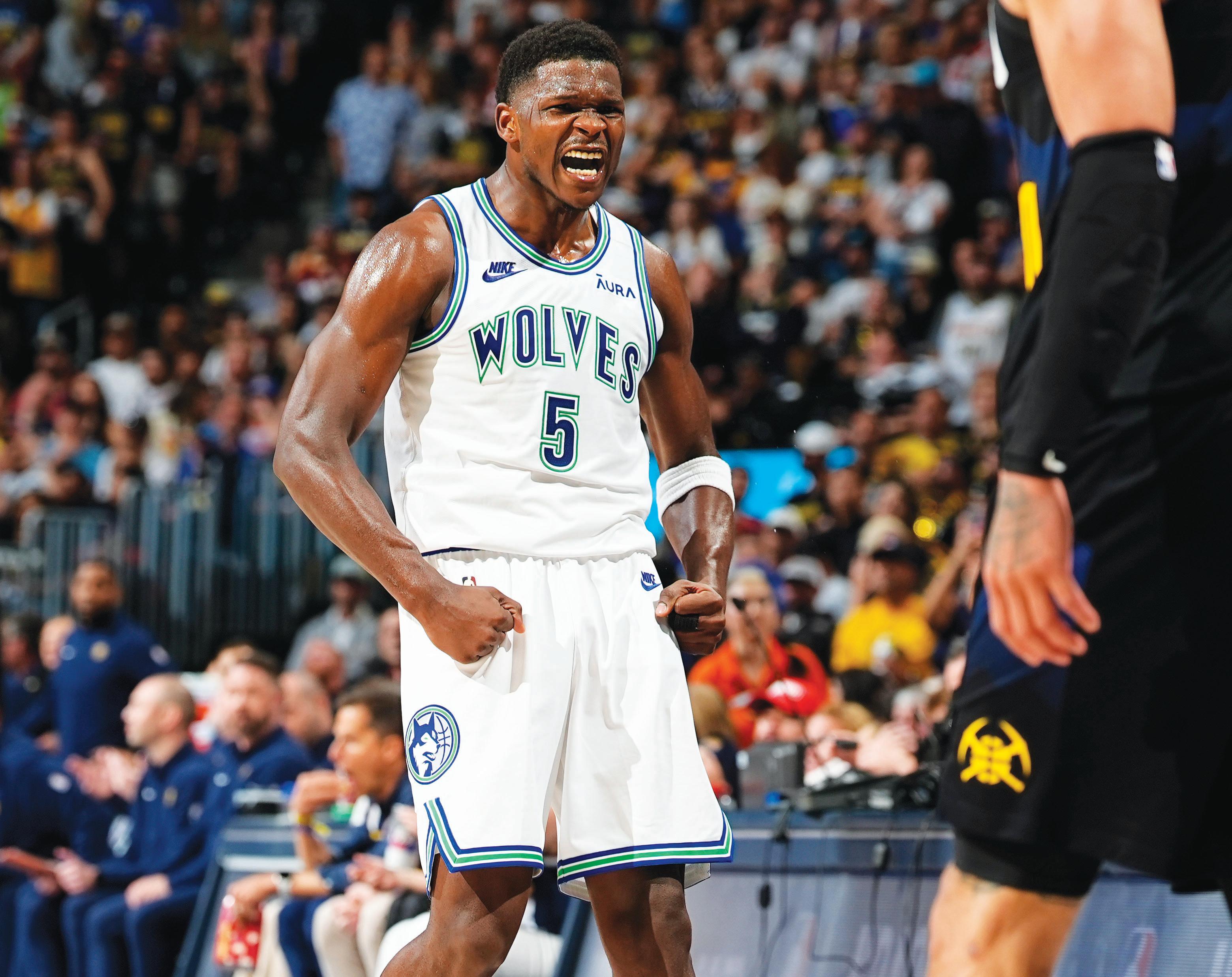
round to Houston. Things began to turn around for the Timberwolves when they drafted Edwards No. 1 overall in 2020. They made it back to the postseason party the following year, losing to Memphis in Round 1.
After hiring head
coach Chris Finch off Michael Malone’s staff in Denver, the Timberwolves hired away the Nuggets’ roster architect Tim Connelly, who built the Wolves explicitly to unseat his former team in Denver.
Connelly’s first major move was a bold get of Rudy Gobert that was as risky as it was unconventional — he sent
five players and five picks to Utah for the star defender — but going big was no small part of this breakthrough season for the Timberwolves.
“I think when Tim Connelly made that trade, everybody was laughing at him like, ‘What is he doing?’ But he made a great team,” Nuggets center Nikola Jokic said as this series began.
Jokic and the defending NBA champions knew that well before losing their semifinal series in such humbling fashion to a team, like theirs, that was assembled largely at Connelly’s direction. As Jokic noted Sunday night,
Connelly’s deep, versatile roster can adapt to any style, meet any challenge and, as Sunday night showed, overcome the longest of odds.
The Timberwolves’ resolve was hardened a year ago when they lurched into the playoffs with a shorthanded team that was quickly dispatched by Denver in five games in Round 1.
Fueled by that disappointment, the Wolves won 56 games this year, produced the league’s top defense and led the Western Conference for most of the season before finishing a game behind Oklahoma City and Denver for the No. 3 seed.
The Wolves made sure seeding didn’t matter.
After their four-game dispatch of the Phoenix Suns that marked their first playoff sweep in franchise history, the Wolves were unfazed by the Nuggets’ 20-5 record in the playoffs over the last two years or by their Western Conferencebest 36-8 record at home this season.
The Wolves won three times in four games at Ball Arena. They took Games 1 and 2 in Denver before losing three in a row. Facing elimination, they recovered with a 115-70 demolition of the Nuggets in Game 6, the biggest win over
a defending champion in NBA history.
And they followed up that win with an epic Game 7 comeback.
“The series was wild and this game was just a microcosm of the entire series,” Finch said.
Towns and Jaden McDaniels each scored 23 points in the clincher. Edwards finished with 16 points, eight rebounds and seven assists with most of his contributions coming in Minnesota’s surgical 60-37 second half that knocked out the Nuggets, who got 35 points from Jamal Murray and 34 from Jokic.
Up next are the
fifth-seeded Mavericks, who reached their second conference championship in three years. They lost to eventual champion Golden State in five games in 2022, but that was before Luka Doncic had Kyrie Irving as his sidekick.
The Wolves won three of four against Dallas in the regular season, with the Mavs winning the only game in which Doncic and Irving both played. Dallas was without both its stars for both losses in Minnesota.
“Honestly, I think for us we’re just so happy for this moment, that we can’t even think about the next moment,” Towns said.
“I’m thinking about it,” Edwards playfully interrupted.
“I will say for us, if we continue to play Timberwolves basketball, it will fix a lot of problems that we may have with that team and what they do best,” Towns suggested. “So as long as we play Timberwolves’ brand of basketball, I like our chances.”
This story has been corrected to show the Wolves won three of four against Dallas in the regular season.
AP NBA: https:// apnews.com/hub/NBA
CoachLeah’s desk: From WNBA broadcasting battles to Timberwolves triumphs
By Pulane Choane Contributing WriterOn a recent episode of “The Conversation with Al McFarlane,” CoachLeah, Insight News MN’s Sports Editor and a revered figure in the Minnesota sports community, steps into the spotlight to address some pressing issues.
She started The Conversation by delving into the controversy surrounding the WNBA’s (The Women’s National Basketball Association) decision to restrict the broadcasting of preseason games, notably the Lynx debut matchup against the Chicago Sky. She highlights the ingenious response of Minnesota native Alli Schneider, who took to (formerly Twitter) to livestream the game, captivating audiences worldwide.
“Isn’t that
wild?”
CoachLeah exclaims, emphasizing the impact of Schneider’s initiative.
“She garnered over 200,000 live viewers and more than 2.5 million views since.”
CoachLeah passionately questions the WNBA’s broadcasting policies, urging them to heed the overwhelming demand from fans. “What is the WNBA going to do about making the right decision for their broadcast moving forward?” she asks, prompting listeners to reflect on the implications of this issue.
Amidst basketball fervor, CoachLeah seamlessly transitions to the NBA playoffs, with a special focus on the Minnesota Timberwolves’ stellar performance. She singles out Anthony Edwards as the rising star, lauding his pivotal role in the team’s success.
“Our shooting guard notched
Today marks the official kickoff of the WNBA basketball season. From pre-season sellouts to record views, the spotlight is on the WNBA. As news outlets buzz with predictions, records, and highlights of the players of the WNBA, the topic of equal pay has also taken center stage.
Just weeks after ending her run as a college basketball star, Caitlin Clark is at the center of attention again – and so is her rookie contract. Clark’s contract currently leaves her with a small fraction of the millions her male counterparts have earned despite making history as an NCAA Division I overall top scorer, and being the No.1 overall pick in the WNBA draft.
Per the collective bargaining agreement, Clark will only earn just over $300,000
over her four-year contract. Even with endorsements and partnership agreements, Clark still only stands to make just over $3 million over the next four years. In stark comparison, the previous year, Victor Wembanyama, the No.1 pick in the NBA draft, secured a $55 million four-year contract. The issue of unequal pay in sports is unfortunately not a new one. For years, women in major sports have been grossly underpaid, and villainized when speaking out against pay disparities. From soccer to basketball, women are constantly forced to advocate for more equitable pay. Simply because the WNBA is younger than its NBA counterpart and revenue has not yet reached the level of the NBA, does not mean that women should
27 points against last year’s World Champion Denver Nuggets,” CoachLeah notes proudly. Despite Coach Finch’s absence due to knee surgery, the team maintains its momentum, showcasing the power of unity and resilience. “You know what? We’re one voice! It’s just as if Coach (Finch) was still there,” she quotes one of the players, highlighting the unwavering determination within the team.
Beyond the courts, CoachLeah extends her appreciation to Dr. Joel Boyd, a prominent figure in sports medicine, for his invaluable contributions to athlete wellbeing. “I wanted to give a quick shout-out to Dr. Joel Boyd,” she acknowledges, underscoring the vital role of medical professionals in the sports industry. As the conversation draws to a close, CoachLeah tantalized listeners with a preview of her upcoming article on the 2024 Summer Olympics,
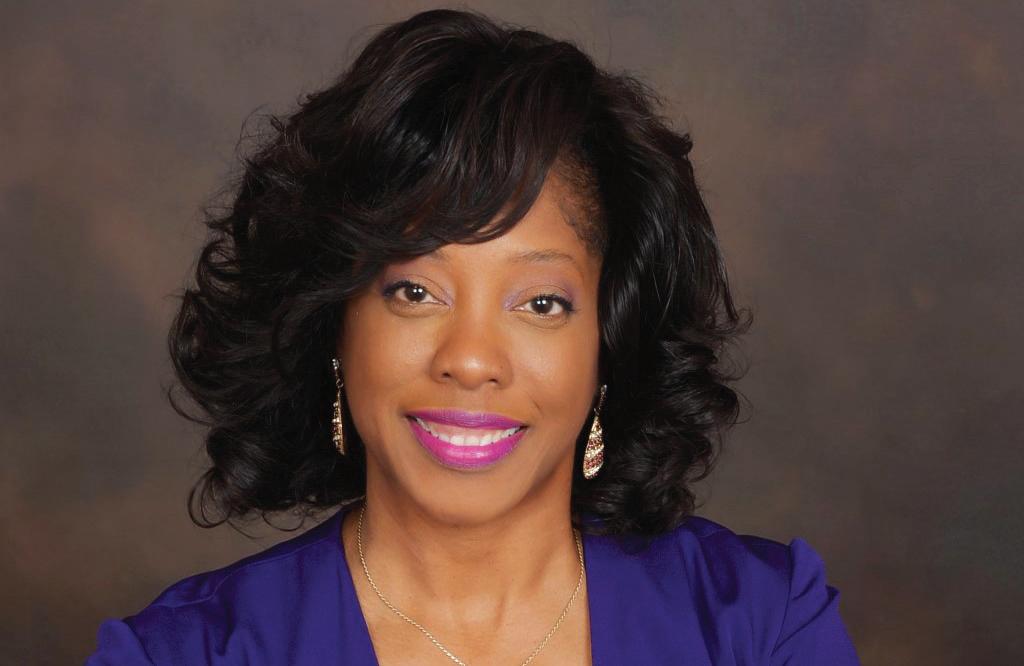
fresh insights into the evolving landscape of global sports. “Stay tuned for next week’s edition of
be saddled with unfair and inequitable shared revenue agreements. In fact, WNBA athletes are not asking for multi-million dollar contracts, the ask is equity. The NBA pays its players between 49 and 51 percent of the league’s revenue, WNBA players take home a maximum of 22.8 percent.
“As athletes, we have to fight. As women, we have to fight… And we need more people at our table to fight with us.”
— Skylar DigginsSmithNational Partnership for Women & Families analysis finds that men are the vast majority of athletes, compromising 87 percent of workers who report being an athlete or sports competitor. Among these athletes, women
typically report making $28,329 annually, just 70 percent of what their male counterparts make ($40,188). Further our analysis from the National Partnership for Women & Families shows that women across various industries make just 78 cents for every dollar white, non-hispanic men make. This wage gap adds up to more than $11,000 for a woman in the course of a year, costing all women more than $1.6 trillion in pay each year. For women of color and disabled women – who face additional systemic barriers to job equity and economic growth – the pay gap is even worse: in comparison to white, non-Hispanic men, Black women are typically paid just 66 cents for every dollar paid to white, non-Hispanic
men. Latinas are typically paid just 52 cents. Native American women are typically paid just 55 cents. And Asian American, Native Hawaiian and Pacific Islander women are typically paid 80 cents. Black women make up more than half of WNBA players. Not only are WNBA players subject to lower pay based on sex, but also the binds of racism, and more. The impact of the inequitable pay of the WNBA is undeniable. We know all too well the tragic story of Britney Griner who left to play basketball in Russia, because she was paid so little as a WNBA athlete in the United States. That decision led to her harrowing imprisonment in Russia for nearly a year. No player should have to risk their lives or look for work in unsafe places just to close the wage gap. It’s clear that the league has the ability to make the change when needed. For example, news recently broke that the WNBA will now charter private planes for players – even though this has been the norm for years for the NBA. The change came just after a video of Caitlin Clark surfaced in the Dallas airport with a throng of eager fans following her. The time is now to acknowledge and value women in sports. It is critical to recognize that this is not just about the pay, but the principle of the matter – women athletes deserve equity.
 By W.D. Foster-Graham Book Review Editor
By W.D. Foster-Graham Book Review Editor
This time of year, we as BIPOC Minnesotans as well as those across the country pay tribute to the memory of George Floyd and our ongoing efforts to push back against the forces that seek to rewrite history, erase our legacy, and further disenfranchise the underserved communities. As it happens, let us remember another occasion some 100 years earlier—the lynching of Elias Clayton, Elmer Jackson, and Isaac McGhie in Duluth, Minnesota. In this milieu, the life of Ethel Ray, who becomes the first Black police officer in the state and goes on to make significant contributions to the community, is shaped. In honor of her grandmother, Karen Felecia Nance shares her story: Ethel Ray--Living in the White, Gray, and Black.
Born in 1899 in Duluth, Ethel Ray was the youngest of four children born to William Henry Ray, a Black Southern man from North Carolina, and Inga Nordquist, a Swedish immigrant woman. Her older sister Ora died at the age of seven from pneumonia; after her treatment by the white racist doctor, William Henry developed a mistrust of doctors. As an interracial family, her parents kept them sheltered from the outside community in the CentralHillside neighborhood. When it came to school, Ethel’s brothers could pass for white. She could not, which made her a target for racist attitudes. When she graduated from Duluth Central High School in 1917, among her many skills were stenography and perfect scores on civil service exams.
William Henry attempted to start an NAACP chapter in Duluth as a counterpoint to the Ku Klux Klan chapter. Due to the hostile environment there, Black residents were reluctant to join out of fear and the lack of numbers. As a young woman, Ethel found work in Moose Lake as an investigator and stenographer when forest fires ravaged the area; even so, she
By Troy JohnsonSula and Nel are born in a small town at the top of a hill. Sula is wild, and daring, while Nel is well-mannered, a mamma’s girl with a questioning heart. Growing up they forge a bond stronger than anything. Strong enough, it seems, to last a lifetime—until, decades later, as the girls become women, Sula’s anarchy leads to a betrayal that may be beyond forgiveness.
Masterful, richly textured, bittersweet, and vital, Sula is a modern masterpiece.
Nobel Prize laureate Toni Morrison gives life to characters who struggle with what society tells them to be, and the love they long for and crave as Black women.
AALBC Bestselling Books
May 2024
The spring 2024 edition of The Killens Review of Arts & Letters outsold all other titles this period.
Fiction bestsellers also include Neighbors and Other Stories a new short story collection by Diane Oliver. Oliver, whose talent was already apparent, tragically passed away in 1966 at the age of 22. Her work was brought to light by Michael A. Gonzales in his article, “Shine
was stereotyped, denied the opportunities given to white girls. To give his daughter greater exposure to African American culture in the U.S., he took her on a pilgrimage to Chicago, New York, and Charlotte. The pilgrimage was a pivotal moment in Ethel’s life, and it solidified her identity as a Black woman.
Ethel was 21 and living in Moose Lake on June 15, 1920 when three circus roustabouts—Elias Clayton, Elmer Jackson, and Isaac McGhie—were charged with raping a white girl, Irene Tusken. The allegation was a lie, but it was enough to trigger a riot that resulted in the lynching of the three Black men. This second pivotal moment fueled Ethel’s desire to leave Duluth.
In 1923, she left Duluth for the Twin Cities, where she became the first Black police officer for the city of Minneapolis. She would go on to become an administrative assistant in the NAACP, a secretary to W.E.B. DuBois, and many other positions of service to the Black community in such places as Kansas City, New York, Chicago, Seattle, and San Francisco.
Through poems and journal entries from her grandmother and greatgrandfather, Karen Nance gives the reader a vivid picture of strength through adversity during Ethel’s early years. Her connection with the church was her rock; it strengthened leadership in her. Ethel’s brothers knew there was no future in staying in Duluth, leaving it behind to pass as white and its cost. The events of 1920 shattered the myth that a lynching could never occur in Duluth, and it spurred Nellie Francis to draft what would become Minnesota’s antilynching law.
My grandparents migrated to Duluth from Kentucky five years after the lynching, where my mother and her five siblings grew up. However, my grandmother never talked about it; my mother did in her later years in passing. The accounts of these events by Willam Henry Ray and Ethel Ray Nance make this a compelling read, written with love, respect, and regard.
Ethel Ray: Living in the White, Gray, and Black is available through In Black Ink. Thank you, Karen, for sharing this rich and powerful history of your grandmother. If we don’t share our stories, who will?
On: The Writings of Diane Oliver.”
Joy-Ann Reid’s book, Medgar and Myrlie: Medgar Evers and the Love Story That Awakened America, which traces the extraordinary lives and legacy of civil rights icons, is the #1 nonfiction title this period.
Jelani’s Key by D. Amari Jackson, published by the African American Literature Book Club, leads a fine list of children’s books.
Alicia Keys makes her debut as an AALBC bestselling author in the poetry category with her collection of poems and lyrics, Tears for Water.
New Books
Ella: A Novel by Diane Richards A magnificent work of “biographical fiction” that reimagines the turbulent and triumphant early years of Ella Fitzgerald, arguably the greatest singer of the twentieth century. When fifteenyear-old Ella Fitzgerald’s mother dies at the height of the Depression in 1932, the teenager goes to work for the mob to support herself and her family. When the law finally catches up, the “ungovernable” adolescent is incarcerated in


The Brooklyn Center council members held a meeting on the 13, of May 2024, where Mayor April Graves read an invocation to promote mental health wellness and other proclamations.
Mental Health Wellness
Mental health is continually becoming a major issue, one that even Mayor Graves has suffered from. Thus, it is a matter that needs to be addressed. As mentioned by the Mayor, below are some of the actions that can help you to “promote wellness within yourself”;
Exercise
Eat healthy (fresh fruits and vegetables)
Prioritize sleep
Build an internal locus of control (focus on what you can control)
Practice mindfulness
Pray
Meditate
Find ways to unload
Set healthy boundaries
Surround yourself with positive people
Practice gratitude

A proclamation was later made declaring May 2024 as Mental Health Awareness Month. It is estimated that nearly half of the United States population will experience a form of mental health challenge over the course of their lifetime. Besides, mental health challenges are one of the most common health conditions in Minnesota. 1 out of 20 adults in Minnesota, and 1 out of 6 youth have experienced issues with
U.S.
Loneliness among seniors has been attributed to higher rates of heart disease, stroke, dementia, depression and anxiety.
U.S. Senators Tina Smith (D-Minn.), Marco Rubio and Rick Scott (both R-Fla.) introduced the Social Engagement and Network Initiatives for Older Relief (SENIOR) Act to combat loneliness among American seniors. In 2023, one in three adults aged 50-80 reported feeling isolated from others, including nearly 40 percent reporting they only have contact with people outside their home once per week. Social isolation and loneliness increase seniors› risk for dementia by some 50 percent—and heart disease and stroke by about 30 percent.
Loneliness is also associated with higher rates of depression, anxiety and suicide.
“People say we can’t combat loneliness through legislation, but I think that’s a ridiculous thing to say. Whether
it’s Meals on Wheels or support for caregivers, there are so many different things we can do to support people as they age,” said Senator Smith. “Nobody deserves to feel so alone and isolated that their health suffers, especially seniors. We are more connected now than ever before – yet loneliness endures. We need to invest in programs that will combat loneliness in our older Americans and I’m glad to be leading this charge.”
“Seniors across the country are suffering from mental health issues and loneliness. That is why I am introducing the SENIOR Act to support Florida’s seniors by addressing this issue and bringing seniors back into our communities,” said Senator Rubio.
“Florida has a wonderful senior population that contributes so much to our great state. Combatting the feeling of isolation and loneliness for our aging community has endless
benefits – from better mental and physical health to stronger, multigenerational relationships with families and communities. I’m proud to lead this bill with Senator Rubio to better support our seniors,” said Senator Scott.
The SENIOR Act would add loneliness as a disease eligible for programming under Older Americans Act. Specifically, the bill would: Allow states to provide OAA grants to programs that are tackling loneliness, such as the foster grandparent program or Meals on Wheels
RequireAdministration for Community Living to provide technical assistance on implementing initiatives addressing loneliness
Requires a report on the impacts of loneliness on seniors and propose solutions for identified impacts, including an analysis of the relationship between the strength of multigenerational family units
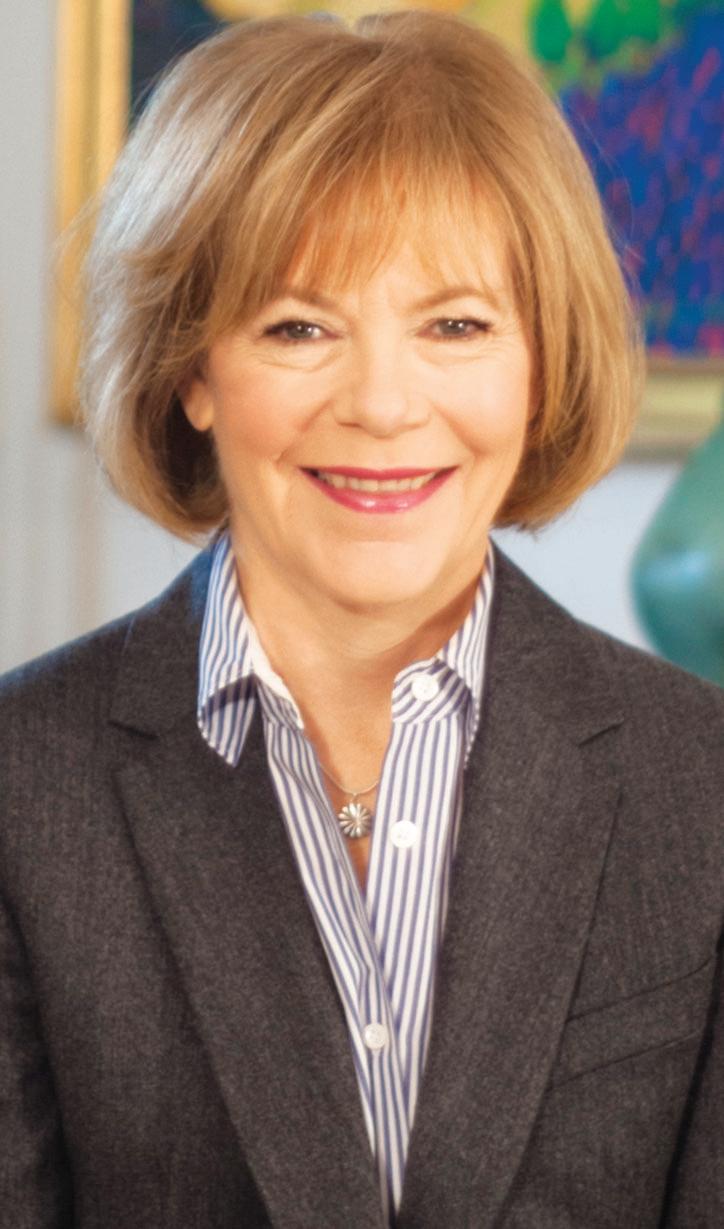
and loneliness in seniors. Senator Smith has been a champion for policies combatting loneliness and social isolation. She and her staff have been touring the state hearing from Minnesota’s seniors on how she can update

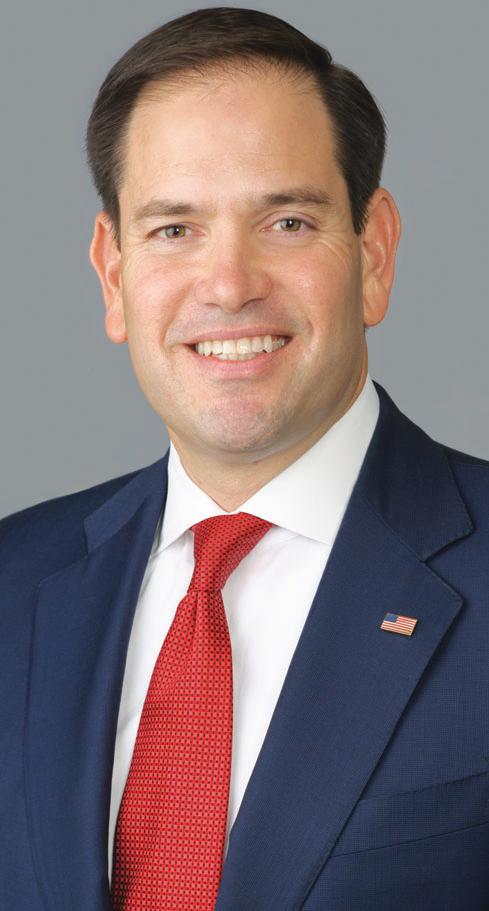

and modernize the Older Americans Act, which will be re-authorized in the coming year for the first time since the COVID-19 pandemic. She also leads legislation alongside Senator Chris Murphy (D-Conn.) to create a national
epidemic.
